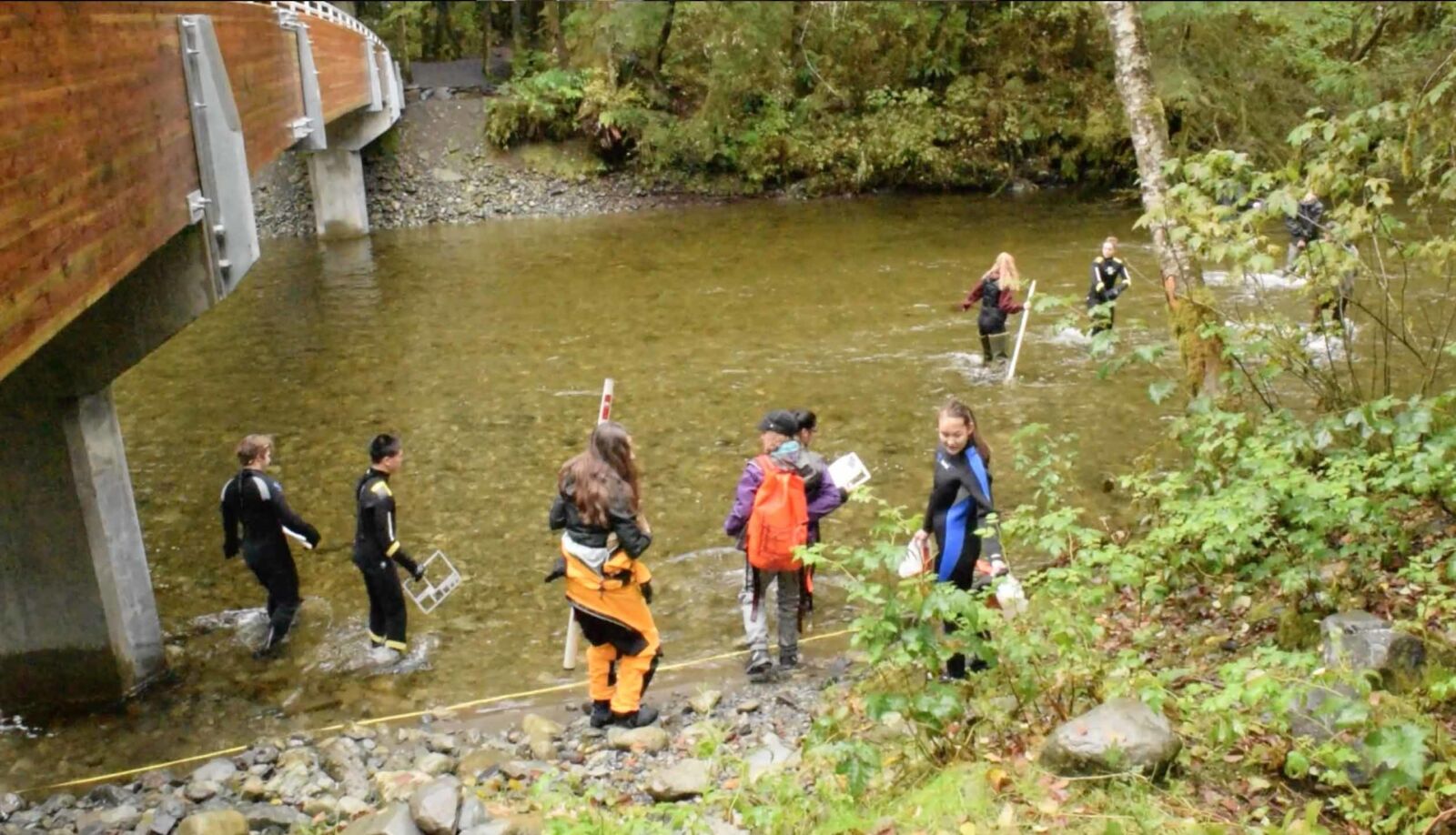It’s cold morning, but high school students are out of their warm classrooms and waist deep in the river on the Tongass National Forest. Using a tool called a gravelometer and data collection techniques, these students are learning about the current health of Indian River in Sitka, Alaska.
The students are collecting data for the Indian River Working Group, a collaborative community working group facilitated by the Sitka Tribe of Alaska. The National Forest Foundation provided support for this project, which focuses on opening a dialog about restoration in the Indian River watershed.
Information about pebble counts and woody debris collected by these students, helped the Indian River Working Group get a clearer picture of the current state of the river. The group is currently about halfway through their series of meetings this year.
If you asked everyone on the street, you couldn’t find a Sitkan who doesn’t rely on Indian River in some way. It’s a popular recreation spot for locals and visitors alike, it’s the city's backup drinking water supply, and it’s a convenient spot for subsistence harvest right on the road system. The mouth of the river runs through Sitka National Historical Park, a site that attracts thousands of visitors every year.

Since so many people rely on Indian River, this working group brings together all of the different agencies, organizations, and members of the public that care about this resource. For the first time, these different stakeholders have come together to begin to create a restoration plan that will benefit the entire Sitka community and ensure that this resource will be around for generations to come.
The National Forest Foundation supports projects like the Indian River Working Group that bring the community together. These community conversations help Sitkans improve and better enjoy our outdoor resources.
Check out this video, produced by the Sitka Tribe of Alaska, that gives you a close up view of the data collection by high school students as part of the Indian River Working Group. This hands-on learning opportunity taught students about community resources, helped the group collect important data, and was a lot of fun for all.

